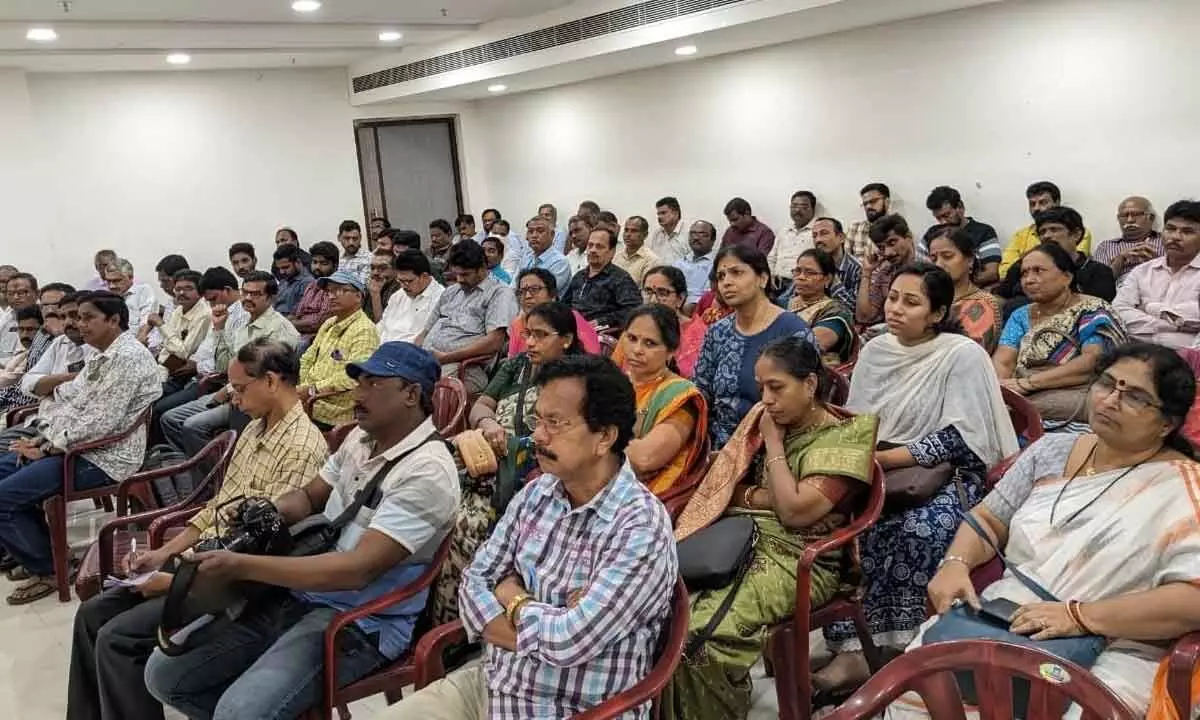Activists bat for better crop insurance coverage for farmers at low premium
Says the PMFBY scheme has been plagued by fraud, inadequate coverage, and an ineffective claim settlement process
image for illustrative purpose

Taming the Risks of Agri
- Agri is risky due to weather vagaries, pest attacks, plant diseases, unpredictable prices
- Investment in irrigation, water control, research, and extension is crucial to help farmers
- A statutory guarantee of MSP can help farmers deal with price risk
- Insurance is another instrument that can be used to mitigate risk in agriculture
Visakhapatnam: Agriculture in pan India has turned risky with the farmers being subjected to face challenges on account of vagaries of weather, pest attacks and plant diseases, and variability and unpredictability of prices. These risks can be mitigated in different ways, felt speakers at a seminar organised by Vizag Insurance Educational Society here on Sunday.
Representatives from various fields attended the seminar addressed by Prof Vikas Rawal, Jawaharlal Nehru University. Sarada Prasad Dash, Senior Divisional Manager, LIC of India and others called for steps to help the farming community to ensure remunerative prices for their products. Institute’s honorary secretary AVRK presided over the meeting. Committee members and social activists N Ramakrishna, SS Moorthy, Subba Rao, SS Ganesh, Ch V Ramana and Venkata Kumar spoke.
The participants stated that investment in agriculture, in particular, in irrigation and water control, and in research and extension should be increased substantially to help farmers deal with diseases and pests. They echoed the voice that statutory guarantee of minimum support prices to farmers can help deal with price risk. The framework for providing a price guarantee was created in the 1960s and 1970s on the basis of recommendations of the Jha Committee (1964). However, this system has been limited to wheat and rice, and over the years has ceased to provide an effective guarantee of price, they bemoaned.
Only a tiny fraction of farmers today have an assurance that their produce will fetch them at least the Minimum Support Price (MSP). In fact, in most years, a vast majority of farmers sell their produce at prices well below the MSP, Prof Rawal pointed out.
Insurance is another instrument that can be used for mitigating risk in agriculture. While this may be important on the margins, until the 1980s, insurance was not considered as the centre-piece of the government’s strategy to mitigate risk in agriculture. The first major scheme for agricultural insurance was the Comprehensive Crop Insurance Scheme which was initiated in 1985, the speakers stated.
This was further expanded in 1999 through the National Agricultural Insurance Scheme. Between 2007-08 and 2015-16, the government also experimented with a weather-based crop insurance scheme, which was, apart from being a weather-based (rather than yield-based) scheme, the first major scheme that involved private insurance companies as insurance providers.
In 2016, the government moved to the Pradhan Mantri Fasal Bima Yojana, which opened crop insurance to the private sector at the national level. The evidence shows that there was an initial expansion of coverage under PMFBY but this has stagnated after that. The expansion of insurance coverage under PMFBY was mainly by way of providing cover to non-loanee farmers.
The speakers opined that PMFBY suffers from a serious problem of lack of regulation and oversight. There is no independent mechanism of verifying validity of data provided by insurance companies. Non-loanee farmers are particularly out of the coverage of regulation. The fact that bulk of the expansion has happened in the category of non-loanee farmers points to the problem, they said.

